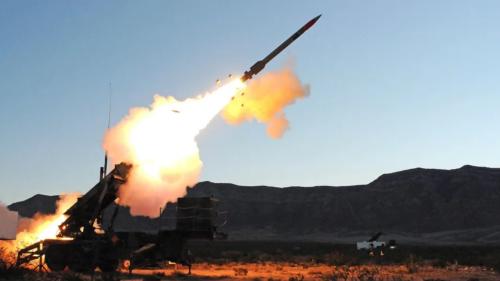
The enthusiasm for a new EU Defense Fund should be tempered. Not only are there the problems and shortcomings that surfaced with the implementation of the EU’s most recent fund initiative, the Recovery and Resilience Facility, there is also a more fundamental issue that can no longer be ignored. This type of EU Fund creates enormous perverse incentives. Better alternatives are available.
In an era marked by geopolitical uncertainty and evolving security threats, ranging from conventional military threats to cyber warfare and hybrid tactics, strategic investment in defense is imperative. However, amid the clamor for increased spending, it is essential to adopt a discerning approach that emphasizes smart and responsible resource allocation. When it comes down to our safety, we want to avoid a sudden political backlash due to a lack of trust in how much and whose money is spend. Clear, fair, and transparent answers regarding financial support and cost allocation for defending our security must be at the forefront of our considerations from the outset.
100 billion euros. This rounded number seems to be on its way to become the magic number with respect to the extra effort the EU should produce as far as defense spending is concerned. It is at this point not entirely clear whether these 100 billion euros are the result of “shooting from the hip” or the conclusion of a careful analysis of the future EU defense needs. What is however beyond any doubt is that a huge amount of extra money will be needed in order to beef up significantly Europe’s defense capabilities.
Risks and Flaws of the RRF Model
There is considerable, though far from unanimous, appetite in European policy circles for a new European fund in the sphere of defense and to be financed through Eurobonds, i.e. the direct take-up in the financial markets of funding by the EU through the European Commission. Those in favor of this option consistently refer to the success of the Recovery and Resilience Facility (RRF), the 735 billion euro EU created in the slipstream of the Covid 19 pandemic and financed through direct lending by the EU.
But is the RRF really the success story that is now often made of it? Though positive results also need to be recognized, some developments are quite disturbing. A fund modeled after the RRF entails serious risks in terms of abuse, fairness, efficiency, involvement, transparency and - last but not least - responsibility.
Already now, there are several cases of manifest fraud with RRF money, more specifically in Italy and Greece. EPPO (European Public Prosecutor Office) is looking into several more of suspect cases. These were accidents waiting to happen as the control mechanisms foreseen for RRF spending are woefully inadequate. As chairman of the EP’s Committee on Budgets I’ve been warning of this defect in the RRF-construct from the beginning.
Then there is the fact that RRF money is flowing disproportionately to Spain and Italy. These two countries together receive almost half of the RRF grants whereas they represent only 25% of the EU’s population and of the EU’s GDP. But, unfortunately, there’s more.
Internal review has led the European Commission itself to pinpoint several weaknesses in the RRF set-up. First, there is the heavy administrative burden that is complicating efficiency and attractiveness of the project. Secondly, there is a manifest lack of involvement of regional and local authorities, social partners and civil society. Thirdly, possible synergies and overlaps with other EU programs and funds have been insufficiently taken care of. Fourthly, and most worryingly, there is considerable lack of information about the identity of the true final recipients of RRF-money. For example, Ministries of Finance and financial institutions like EIB and/or EBRD can hardly be accepted as the real final recipients.
Although the above list of RRF shortcomings should already be considered as a significant warning, the main problem with this kind of EU program and funding still has to be articulated. Eurobonds or equivalent forms of EU-funding create very outspoken negative incentives. In economists’ language: it is moral hazard that is very much plaguing Eurobonds. The basic fact is that with this type of funding weaker member states rely on stronger member states to deliver credibility and creditworthiness. This situation would be a defendable one if and when weaker member states would then deliver on structural reforms and the re-establishment of fiscal discipline so that over time they can re-join the ranks of the stronger member states. The reality is however that all too much the ability to lean on the shoulders of stronger member states creates the adverse incentive to just take advantage of those strong shoulders and leave it at that. Fundamental efforts on the part of weaker member states to reinforce their own credibility and creditworthiness too often do not get beyond the point of loudly proclaimed promises.
A tripartite strategy beyond Eurobonds
If, as I argue, a new EU Defense Fund financed by some sort of Eurobonds is not the panacea for the EU’s acute defense needs, then what is a better alternative? That alternative consists of three elements.
First, the EU needs to create the framework that, preferably within a NATO-context, aims for maximum convergence and compatibility in delivering defense capacity and capabilities. This compatibility is hugely important for the credibility and efficiency of the EU’s augmented defense efforts.
Second, private sector financial and innovative potential needs to be engaged to the fullest extent possible. Let the United States be an example here. President Biden’s IRA (Inflation Reduction Act) is a huge success, not so much because of the subsidies but because of the substantial tax breaks available for companies investing successfully in areas like clean energy (but also in other activities!). EU member states should more or less copy the IRA-concept for the areas of defense and cyber security. The investments such tax breaks incentivizes, will not only produce augmented defense capabilities but also additional jobs and spill-overs to civilian applications of the technologies developed, not to mention the prospect of higher government revenues as a consequence of more activity and more jobs.
Third, the European Investment Bank (EIB) should again be enabled to finance projects related to military purposes. The EIB’s new president, Nadia Calvino, has taken commendable initiatives to this effect but the ban of EIB getting involved in munition production is apparently remaining intact. Also this ban should go.
If these three actions are carried out simultaneously, the built-up of modern military capacity and capabilities within the EU will be realized in an efficient and rapid way while minimizing the risk of losing support for the ultimate objective: keeping European citizens and businesses safe and secure.
You may also be interested in

Exhausted we stand
The Western world is confronted by challenges the enormity of which has not been seen since the Second World War. We stagger to face these challenges in a state of policy exhaustion, budgetary as well as monetary. Only courageous and decisive reform can turn the tables in our favor.

The Draghi & Schnabel Truth on Trump
The actions of the new Trump administration will have a major impact beyond America’s borders, not least in Europe. Nevertheless, Europe should stop mourning the Democrats’ loss and do what it must do, whatever Trump’s intentions. Money is not the most pressing issue on Europe’s priority list, so Mario Draghi very correctly argues.